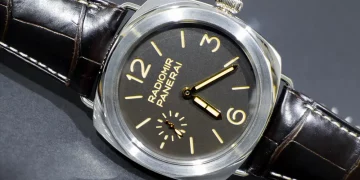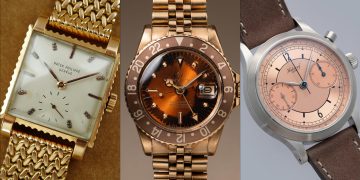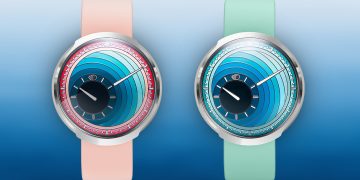Water and watches don’t mix well. Even with the most durable models, water damage can be catastrophic. Whether you’ve dropped your watch in the sink, been caught in the rain, or accidentally exposed it to moisture, water damage can quickly turn a prized timepiece into a non-functional relic. But what if you could save your watch with something as simple as a $2 household item? In this article, we will explore a lifesaving hack for rescuing a wet timepiece, and we’ll compare DIY fixes to professional restoration options.
The Immediate Danger: Why Water Is a Watch’s Worst Enemy
Watches, especially mechanical ones, are finely tuned instruments composed of intricate parts, each of which requires precision and care to operate smoothly. When water seeps into a watch, it can cause immediate and long-term damage. Even if the water doesn’t immediately stop the watch from ticking, it can cause rust, corrosion, and other irreversible harm to the internal components.
Most modern watches, especially luxury or high-end models, are built with water resistance in mind. However, that doesn’t mean they are entirely waterproof. Even watches with water resistance ratings can suffer from the ingress of moisture if the seals aren’t functioning correctly or if the watch is exposed to pressure or conditions beyond its specified limits.
When water enters a watch, the immediate threat is to the movement—where moisture can interact with delicate gears, springs, and the lubrication oil used to prevent friction. Over time, this can lead to mechanical failure. Other components, such as the dial, hands, and caseback, can also be damaged by water exposure.
So, what can you do when your precious watch meets its wet demise? The answer might surprise you.
The $2 Household Hack: Silica Gel – Your Emergency Savior
The solution to a water-damaged watch may lie in something as simple and inexpensive as silica gel—the very same desiccant that comes in small packets inside shoeboxes, bags, and electronics packaging. Silica gel, a highly effective moisture-absorbing agent, can help draw out the moisture from your water-damaged watch, potentially saving it from irreversible harm.
How Silica Gel Works
Silica gel is made up of tiny beads that have a strong affinity for water. These beads have a porous structure that traps and absorbs moisture, effectively reducing the humidity around them. When placed in close proximity to your watch, silica gel can work its magic by drawing out the moisture trapped inside the case.
Many people are unaware of how effective this simple hack can be, especially if the watch is still functional but damp. Rather than panic or immediately take your watch to a repair shop, placing your water-damaged watch in a bag or container filled with silica gel can help remove the moisture and prevent long-term damage.
The Process: How to Use Silica Gel to Save Your Watch
- Dry the External Part of the Watch: If your watch is wet, begin by gently drying the external surfaces with a soft cloth. Be sure to dry the case, bracelet, and any visible areas thoroughly. You don’t want any lingering moisture causing damage to the exterior.
- Remove the Watch from Any Additional Water Exposure: Avoid putting the watch in rice or using other common household items to dry it. These can be ineffective and may cause more harm than good. The key here is to eliminate moisture from within the watch case, and silica gel does this best.
- Place the Watch in a Container with Silica Gel: Put your water-damaged watch in a sealed container or plastic bag with a generous amount of silica gel packets. If you don’t have the traditional packets, you can buy loose silica gel or even find a desiccant pack from a local store. Be sure to use enough silica gel to cover the watch entirely.
- Leave the Watch Overnight (or Longer): The silica gel will begin absorbing the moisture from inside the watch. Leave the watch in the bag or container for at least 24-48 hours. The longer you leave it, the more effective it will be in pulling moisture out of the watch.
- Check for Improvements: After a couple of days, check the watch to see if it is still damp. If the moisture has been successfully removed, the watch should be free from internal condensation, and the movement should function normally again. If the watch is still damp or showing signs of rust, it’s time to consider professional repair.

DIY Fixes vs. Professional Restoration: What to Do Next?
While silica gel is an excellent first step in attempting to save a water-damaged watch, it’s important to understand the limits of DIY fixes. In some cases, professional restoration may be necessary to prevent long-term damage.
DIY Fixes: When They Work and When They Don’t
Silica gel is an effective and inexpensive first-aid solution, but it’s not a guaranteed cure-all. Here’s when a DIY fix might work:
- Small Amounts of Water Exposure: If the watch has only been briefly exposed to moisture—say, a splash of water or a quick dunk—it’s likely that a silica gel treatment will suffice to dry out the watch and restore its functionality.
- Non-Mechanical Watches: Quartz watches, which don’t rely on intricate mechanical movements, may be more forgiving when it comes to moisture exposure. Silica gel may successfully remove moisture and allow the watch to function as it did before.
- Cosmetic Damage Only: If the water exposure hasn’t caused any internal corrosion or rust, you may get away with a DIY fix using silica gel to address the external moisture.
However, DIY fixes like silica gel won’t work in every scenario:
- Extended Water Exposure: If the watch has been submerged for a long period, it’s likely that the internal components have been affected. Silica gel may not be enough to reverse the damage.
- Rust or Corrosion: Once rust or corrosion sets in, it becomes much more challenging to repair the watch. Silica gel won’t prevent rust, and it’s likely that the movement will need to be disassembled and cleaned professionally.
Professional Restoration: The Ultimate Solution
If your watch shows signs of severe water damage, such as condensation inside the crystal, rust on the movement, or malfunctioning hands, it’s time to consult a professional. Watchmakers and authorized repair centers have the tools, knowledge, and parts required to properly diagnose and fix water damage.
A professional repair usually involves disassembling the watch, cleaning each component thoroughly, and replacing any damaged parts. This is especially important if water has seeped into the movement, as it could lead to lasting damage if left untreated. A professional will also be able to assess the watch’s water resistance seals and replace them to ensure the watch is protected in the future.
The Importance of Prevention: How to Keep Your Watch Safe
While silica gel may be a great emergency fix, the best way to protect your watch from water damage is to prevent it in the first place. Here are some tips to keep your timepiece safe:
- Understand Your Watch’s Water Resistance: Different watches have different water resistance ratings. Make sure you understand the limits of your timepiece and avoid exposing it to water beyond its capacity.
- Seal the Crown Properly: Always ensure the crown is fully screwed down before getting the watch wet. A crown left partially unscrewed is the easiest way for water to enter the watch.
- Use a Waterproof Case: If you’re heading to a beach or pool, consider storing your watch in a waterproof case to protect it from accidental exposure.
Conclusion: Silica Gel as Your Watch’s Lifeline
While it’s always best to prevent water damage from occurring, accidents happen. Fortunately, silica gel offers a low-cost, effective emergency fix that can help save your water-damaged watch in a pinch. Whether you’re dealing with a minor spill or a more severe case of moisture exposure, this simple household item can be a lifesaver.
However, it’s important to remember that DIY fixes are only suitable for certain situations. If you notice signs of long-term damage or if the watch continues to malfunction after using silica gel, it’s time to seek professional help. In the end, maintaining your watch and understanding its limits is the best way to ensure its longevity—regardless of the occasional slip-up.





































